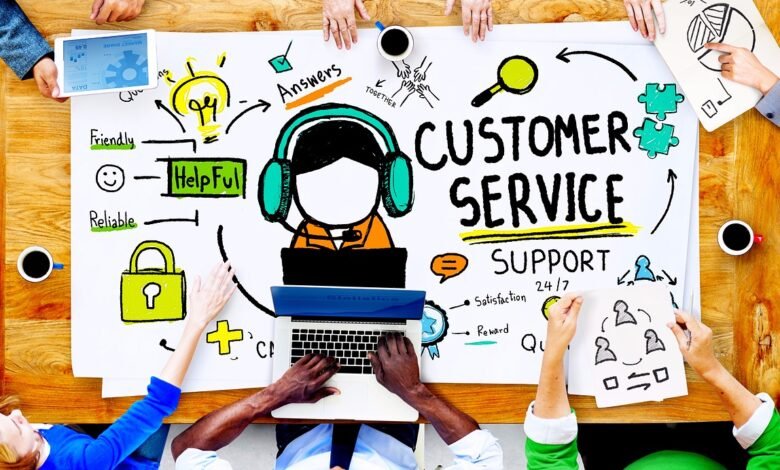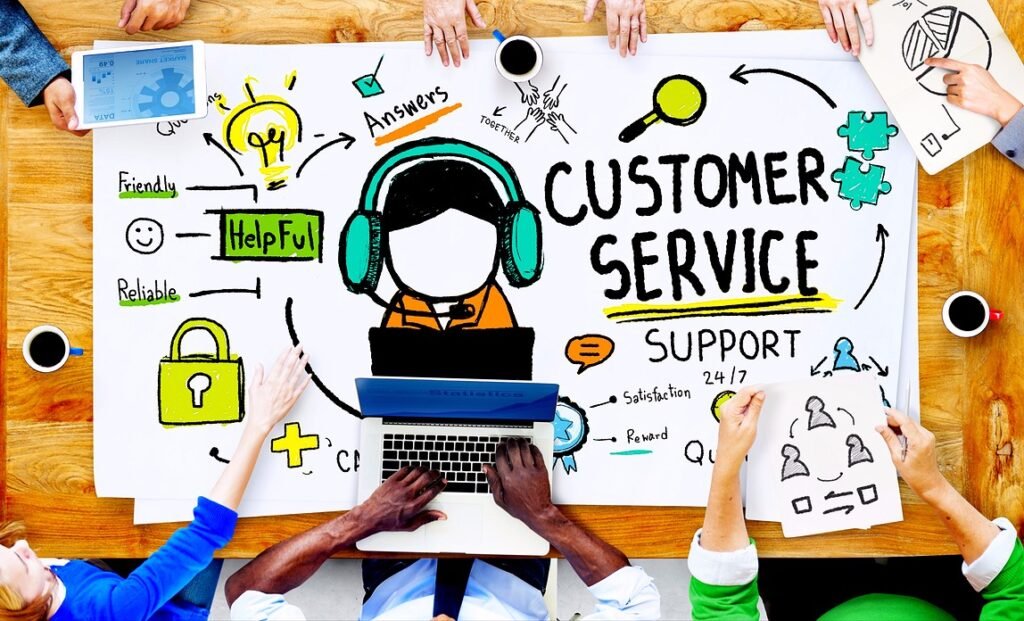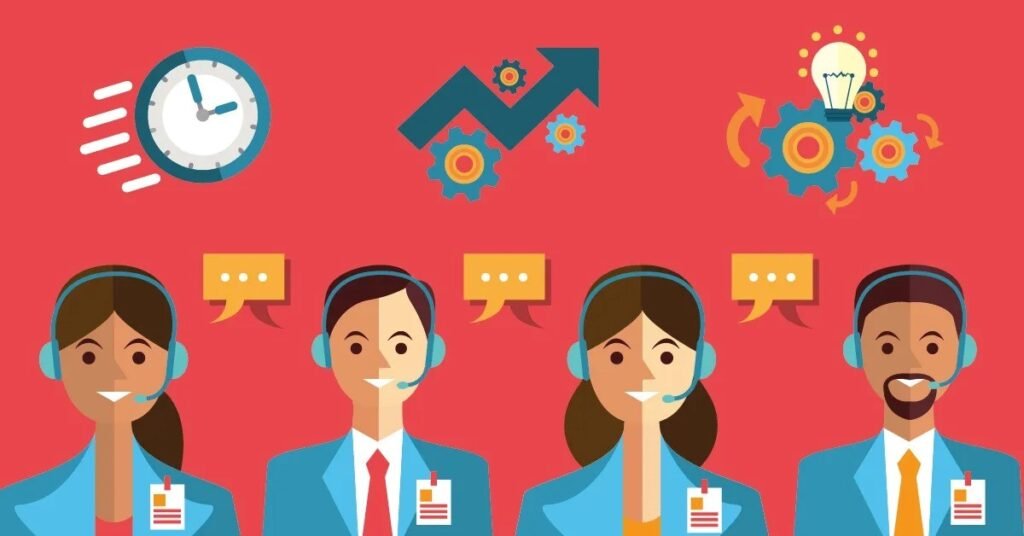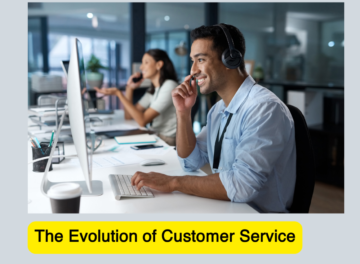How to Build a Customer-Centric Culture


Introduction: The Importance of Exceptional Customer Service
I understand that offering exceptional customer service isn’t just a perk; it’s essential. Superior customer service directly impacts our business by:
- Increasing customer loyalty and retention.
- Differentiating us from our competitors.
- Driving positive word-of-mouth and referrals.
- Boosting overall revenue and profitability.
As I navigate this intricate landscape, prioritizing customer needs becomes my guiding principle. By focusing on every interaction, I can turn customers into advocates. This approach isn’t merely reactive but proactive, ensuring every experience is memorable. I’ve found that a customer-centric mindset starts at the top and permeates every level of my organization.
Active Listening: Understanding the Customer’s Needs
I prioritize active listening to understand customer needs better. When I engage with a customer, I focus entirely on them, avoiding distractions. Key steps include:
- Maintaining Eye Contact: It shows I am engaged.
- Asking Clarifying Questions: This ensures I grasp details accurately.
- Paraphrasing: I restate their points to confirm understanding.
- Observing Non-Verbal Cues: Body language often reveals unspoken concerns.
- Empathizing: Acknowledging their feelings and concerns builds trust.
I believe these steps help create a deeper connection with customers, ultimately leading to tailored solutions and enhanced satisfaction.
Effective Communication: Clear and Concise Interaction
Understanding customer needs is crucial. I prioritize active listening to ensure I grasp their expectations. I maintain transparent, jargon-free language in all interactions. Responding promptly shows respect and builds trust.

Key Practices:
- Give full attention to the customer.
- Show empathy and understanding.
- Transparency:
- Use simple, clear language.
- Avoid industry jargon.
- Prompt Responses:
- Reply quickly to inquiries.
- Keep customers informed about any delays.
Effective communication with customers fosters a customer-centric culture by making them feel heard and valued.
Empathy: Connecting with the Customer on a Personal Level
To genuinely connect, I place myself in the customer’s shoes. This involves:
- Active Listening: I ensure I truly hear and understand their needs and concerns.
- Personal Interaction: I address customers by name, acknowledging their unique circumstances.
- Emotional Intelligence: I recognize and respond to their emotions, whether frustration or joy.
- Tailored Solutions: I provide solutions that meet their specific needs, rather than one-size-fits-all responses.
- Feedback Implementation: I use their feedback to improve and adapt my approach, demonstrating that their input is valuable.
Patience: Handling Customer Issues Gracefully
When dealing with customer issues, I always make patience my priority. Patience lets me fully understand the problem and respond thoughtfully. Here’s how I handle these situations:
- Listen Actively: I ensure I listen without interrupting to grasp the customer’s issue fully.
- Acknowledge Feelings: I empathize with their frustration or concern, confirming their feelings are valid.
- Provide Clear Solutions: I offer precise steps to address their problem.
- Follow Up: I check back to ensure the solution worked and they are satisfied.
By practicing patience, I turn potential conflicts into positive experiences.
Problem-Solving Skills: Offering Prompt and Efficient Solutions
When dealing with customer issues, I focus on quickly identifying the problem. I listen attentively to fully understand the customer’s concerns. Then, I use these strategies:
- Analyze: Break down the problem into manageable parts.
- Research: Gather information on the problem and possible solutions.
- Communicate: Keep the customer informed throughout the process.
My aim is to provide effective and timely resolutions. This approach not only satisfies the customer but also builds trust and loyalty. Prompt problem-solving demonstrates our commitment to their satisfaction, proving we value their time and experience.

Product Knowledge: Being Well-Informed About What You Offer
For ensuring that I provide exceptional customer service, I need to have thorough knowledge of the products or services. This involves:
- Understanding Features and Benefits: I should know the intricate features and benefits of each product, explaining how it solves specific problems.
- Staying Updated: Regularly updating myself on new features, updates, or changes in the product portfolio is vital.
- Competitor Analysis: Knowing what competitors offer helps me position products effectively to highlight unique selling points.
- Customer Feedback: Using customer feedback to improve my knowledge and the product itself ensures better service.
Being well-informed allows me to address queries efficiently and boost customer trust.
Time Management: Prioritizing Tasks and Managing Workload
When building a customer-centric culture, I need to manage my time effectively. I can start by:
- Identifying Priorities: Determine customer needs and align tasks accordingly.
- Delegating Tasks: Assign roles to team members based on their strengths.
- Using Technology: Utilize CRM tools to organize customer information.
- Scheduling: Create a realistic timeline for customer-related activities.
- Regular Reviews: Continually assess progress and make adjustments.
By optimizing time management, I ensure that customer satisfaction remains at the core of all activities, fostering a culture where customer needs are paramount.
Adaptability: Handling Different Situations and Customer Types
In my experience, adaptability is essential for building a customer-centric culture. It requires the capability to respond to various customer needs and scenarios effectively.
- Recognize individual needs: Understand that each customer is unique. Active listening helps me tailor my approach.
- Flexibility in communication: Adjust communication styles—some prefer detailed explanations, others want quick solutions.
- Problem-solving: I stay calm and think critically to resolve unexpected issues efficiently.
- Feedback integration: Using customer feedback to adapt and improve processes demonstrates commitment to their satisfaction.
By honing these skills, I improve customer interactions significantly.
Positive Attitude: Maintaining Morale and Encouraging Customer Satisfaction
I strive to maintain a positive attitude in all interactions. This behavior sets the tone for how my team engages with customers as well.
- Lead by Example: I consistently demonstrate optimism and enthusiasm.
- Encourage Open Communication: I foster an environment where team members feel comfortable sharing feedback.
- Offer Recognition: I frequently acknowledge team achievements to boost morale.
- Training and Development: I invest in coaching sessions to help my team handle challenging situations.
By prioritizing a positive attitude, I create a workplace where team members feel valued, driving them to enhance customer satisfaction.

Resilience: Bouncing Back from Challenging Interactions
When dealing with difficult customer interactions, I focus on resilience. It’s essential to maintain composure and professionalism, even under pressure. Here are my strategies:
- Active Listening: I listen carefully to the customer’s concerns without interrupting, ensuring they feel heard and understood.
- Empathy: I empathize with their situation, showing genuine concern for their issues.
- Positive Attitude: I keep a positive demeanor to defuse tension and foster a constructive dialogue.
- Problem-Solving: I identify solutions quickly and effectively, aiming to resolve the customer’s problem to their satisfaction.
- Follow-Up: I follow up to ensure complete resolution and regain customer trust.
“Resilience is key to turning challenging interactions into opportunities for growth.”
Conclusion: Continual Improvement and Lifelong Learning in Customer Service
I understand the need for continual improvement and lifelong learning in customer service:
- Ongoing Training: I invest in regular training sessions to ensure my team stays updated.
- Feedback Loop: I actively seek feedback from customers and use it to drive improvement.
- Adaptability: I foster adaptability, encouraging my team to embrace new technologies and methods.
- Professional Development: I support my team’s professional growth through courses and certifications.
- Benchmarking: I regularly compare our performance against industry standards to identify areas for improvement.
By embracing these strategies, I consistently enhance the customer-centric culture in my business.



Myleene Champer
Temp Mail You’re so awesome! I don’t believe I have read a single thing like that before. So great to find someone with some original thoughts on this topic. Really.. thank you for starting this up. This website is something that is needed on the internet, someone with a little originality!
Temp mail I appreciate you sharing this blog post. Thanks Again. Cool.
Business dicker I really like reading through a post that can make men and women think. Also, thank you for allowing me to comment!